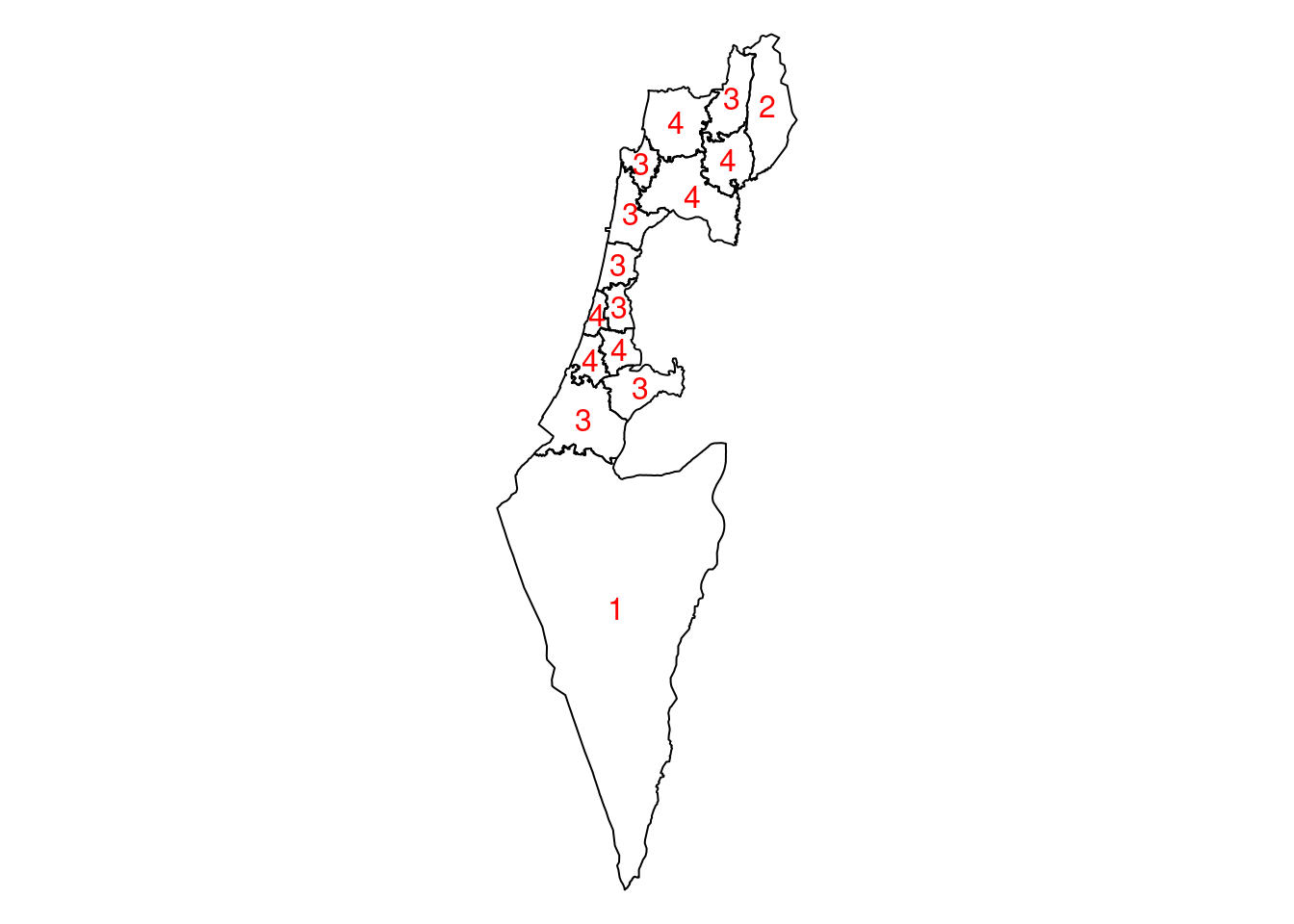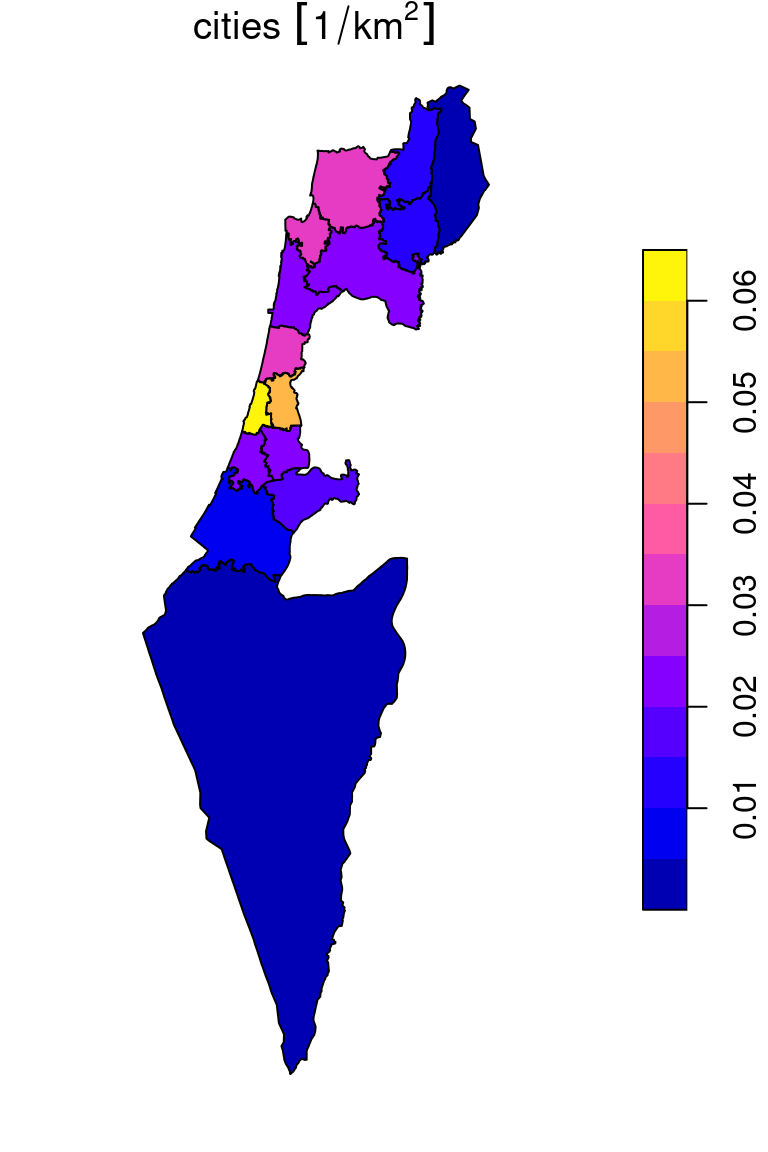F Exercise 04
Last updated: 2021-03-31 00:29:21
F.1 Question 1
- Read the Shapefile named
nafot.shp, which includes polygons of “Nafa” administrative regions in Israel. - Calculate how many neighboring polygons each “Nafa” intersects with (not including self!).
- Plot a map that shows the number of neighbors per “Nafa” (Figure F.1).
- Remember: do not use specific values in your calculation, the number of neighbors needs to be calculated in the code!

Figure F.1: Number of neighbors per “Nafa”
(50 points)
F.2 Question 1
- Load the built-in
data.frameobject namedworld.citiesfrom themapspackage, as follows:
library(maps)
head(world.cities)
## name country.etc pop lat long capital
## 1 'Abasan al-Jadidah Palestine 5629 31.31 34.34 0
## 2 'Abasan al-Kabirah Palestine 18999 31.32 34.35 0
## 3 'Abdul Hakim Pakistan 47788 30.55 72.11 0
## 4 'Abdullah-as-Salam Kuwait 21817 29.36 47.98 0
## 5 'Abud Palestine 2456 32.03 35.07 0
## 6 'Abwein Palestine 3434 32.03 35.20 0- The
world.citiesobject is a table with world cities of population greater than about 40,000. The table includes the longitude and latitude of each city in thelongandlatcolumns, respectively. - Read the Shapefile named
nafot.shp, which includes polygons of “Nafa” administrative regions in Israel. - Subset those cities which intersect with the “Nafa” polygons.
- Calculate cities density (cities / \(km^2\)) per “Nafa” polygon.
- Plot the densities with a color scale, as shown in Figure F.2.

Figure F.2: Cities density (\(1/km^2\)) in each “Nafa”
(50 points)